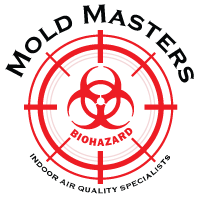There are many types of mold found both inside and outside of our homes. Add moisture and a food
source (drywall, wood, ceiling tiles, furniture, carpet, concrete or cinder blocks etc) and you’ll have mold
growth.
Mold can be found everywhere. In nature, mold spores serve the purpose of breaking down biological
materials. They can float in the air and travel easily, even by light wind. When they land on a surface
that is moist they will grow and begin the process of digesting the material.
Naturally our homes are made of products that mold can feed on. When we allow moisture to be
present, the spores that are present will be able to grow. While there are many different species of
mold there are several that are commonly found growing indoors. They are, in descending order of
commonality, Penicillium, Aspergillus, Cladosporium and Stachybotrys.
Molds can affect us in different ways. Some can cause allergy symptoms such as a cough, runny nose
and itchy eyes. Others can cause infections, especially for those with immune system issues, increased
asthma problems and other lung issues. Though less common, there are molds that can cause serious
health issues.
There are basically three different types of molds based on their effect on humans. They are as follows:
1) Allergenic Molds: These tend to cause allergic type symptoms, similar to hay fever symptoms,
but can also trigger asthma problems. Cladosporium is one of the molds in this class.
2) Pathogenic Molds: These have the potential to cause infections in humans. It is far more serious
for those with immune system issues.
3) Toxigenic Molds: These have the potential to cause serious health effects. There have been
studies that link them to cancer, neurological issues and auto immune problems. Your body can
show effects from these molds when accidentally ingested, inhaled or touched.
The mold Penicillium is considered moderately toxic. It has the potential to trigger allergy and asthma
symptoms and may be more serious for those with compromised immune systems. Aspergillus may
also trigger asthma and allergy symptoms. In addition, it is known to cause aspergilliosis which is an
infection of the airway. Cladosporium also has the potential to cause allergies and asthma, though in
rare cases it can cause infections. Stachybotrys Chartarum is the mold that is commonly called “black
mold”. Though this mold is not as common as the others on this list, it can cause serious health issues
including respiratory problems, neurological issues, hemorrhaging, damage to your organs and
suppressed immune issues.
The bottom line is this: if you are concerned that you have mold in your home or business, seeking the
advice of a mold specialist is recommended. All molds have the potential to cause health problems.
Your loved ones just aren’t worth the risk.
Please note that at Mold Masters NEO we have extensive experience in mold testing, remediation and
repairing the cause of the moisture. We do not employ any medical doctors and do not issue medical
advice. If you are experiencing a health problem, please consult your doctor.
Sources
Centers for Disease Control and Prevention
FindLaw
DavidWolfe.com
